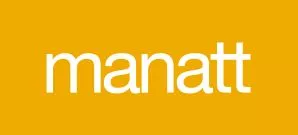- with readers working within the Pharmaceuticals & BioTech industries
- within Real Estate and Construction, Immigration, Litigation and Mediation & Arbitration topic(s)
The U.S. Patent and Trademark Office (USPTO) published guidance for examiners about the requirement for a flexible approach in determining whether an invention would have been obvious.1However, the guidance does not address the potential impact of artificial intelligence (AI) when determining obviousness, leaving many questions unanswered as described below.
The guidance reminds examiners that the obviousness inquiry is outlined in the Supreme Court's Graham v. John Deere Co. (1966) decision:
Under [35 U.S.C.] §103, the scope and content of the prior art are to be determined; differences between the prior art and the claims at issue are to be ascertained; and the level of ordinary skill in the pertinent art resolved. Against this background the obviousness or nonobviousness of the subject matter is determined. Such secondary considerations as commercial success, long felt but unsolved needs, failure of others, etc., might be utilized to give light to the circumstances surrounding the origin of the subject matter sought to be patented.2
In addition, the guidance reiterates the Supreme Court's KSR Int'l Co. v. Teleflex Inc. (2007)3opinion where the Court emphasized that the test for obviousness is flexible but acknowledged the importance of providing a reason to combine multiple prior art references to show an invention would have been obvious:
Often, it will be necessary for a court to look to interrelated teachings of multiple patents . . . to determine whether there was an apparent reason to combine the known elements in the fashion claimed by the patent at issue.To facilitate review, this analysis should be made explicit. . . . As our precedents make clear, however, the analysis need not seek out precise teachings directed to the specific subject matter of the challenged claim, for a court can take account of the inferences and creative steps that a person of ordinary skill in the art would employ.4
The updated guidance reiterates that examiners must provide a clear description of their reasoning, based on specific facts, when deciding that a claimed invention would have been obvious.
The guidance instructs examiners to take the "ordinary creativity" of a person having ordinary skill in the art into consideration when analyzing whether earlier disclosures render a claimed invention obvious. In addition, different technologies or different factual situations may result in different lines of analysis with respect to the reason to combine prior art references and/or the determination of obviousness. The guidance does not have the effect of law, but was created for internal USPTO examination purposes, and any failure in following it is not appealable or petitionable.
Takeaways and Perhaps More Questions Than Answers
The guidance does not significantly change the examination approach to obviousness, except that the guidance reinforce the flexible approach an examiner can use while at the same time emphasizing that the examiner must provide a clear description of the reasons for the obviousness rejection. Thus, Applicants can argue, in addition to distinguishing the prior art, that the examiner failed to provide sufficient facts or reasoning. For example, Applicants can traverse a rejection where an examiner relies on "common sense" or "design choice" without a detailed explanation. The guidance, however, informs practitioners that it does not have the effect of law, and therefore, failure by an examiner to follow the guidance is not in itself a petitionable or appealable issue.
The guidance highlights the significance of considering all relevant evidence. Thus, it is the applicant's duty to ensure that the relevant evidence is submitted for consideration, including secondary considerations of nonobviousness such as long-felt need, copying by others, commercial success and the like. Evidence of secondary considerations of nonobviousness must be specific to the claimed invention and not just general statements of the invention's benefits. The guidance specifically cautions against conclusory statements and requires particular factual support for evidence of secondary considerations.
The guidance does not address the potential impact of AI when determining obviousness. For example, can AI be considered a person of ordinary skill in the art (POSITA), or is prior art discovered in an AI search considered analogous or in the field of the invention to support an obviousness rejection? Can AI be used to provide the reason to combine prior art references, or can AI be used to support an assertion of "common sense" or "obvious design choice"?
What if it can be shown that people doing the search would not have discovered the prior art, but AI did? Should AI be considered as having more skill than a POSITA, and therefore, any information generated or discovered by AI be excluded from an obviousness standpoint? How can AI ever be considered or used for obviousness when the AI capability was not available at the time of the invention?
For inventions created using AI, can AI create a "discovery" under the constitution because AI is not a person? That is, the constitution states that inventors are awarded for their discoveries, and there was no concept of an inventor being anything but a person at the time of the constitution. If AI arguably can be an inventor, what is the patent application process at the USPTO? How can USPTO documentation be signed, or how does a patent practitioner get authorized to represent an invention where AI is an inventor? How does or can AI sign a Power of Attorney? How does AI review the patent application and claims to acknowledge that it is indeed an inventor of the claimed invention? Wouldn't AI have to disclose what information was obtained from the prior art, the specific prior art references used and what reasoning or basis it used to combine the prior art if relevant to the invention?
Footnotes
1 Updated Guidance for Making a Proper Determination of Obviousness, 89 Fed. Reg. 14449 (February 27, 2024).
2 Graham v. John Deere Co. of Kansas City,383 U. S. 1, 17–18 (1966).
3 KSR Int'l Co. v. Teleflex Inc., 550 U.S. 398, 127 S. Ct. 1727, 82 USPQ2d 1385 (2007).
4 Id., 82 USPQ2d at 1396 (emphasis added).
The content of this article is intended to provide a general guide to the subject matter. Specialist advice should be sought about your specific circumstances.


